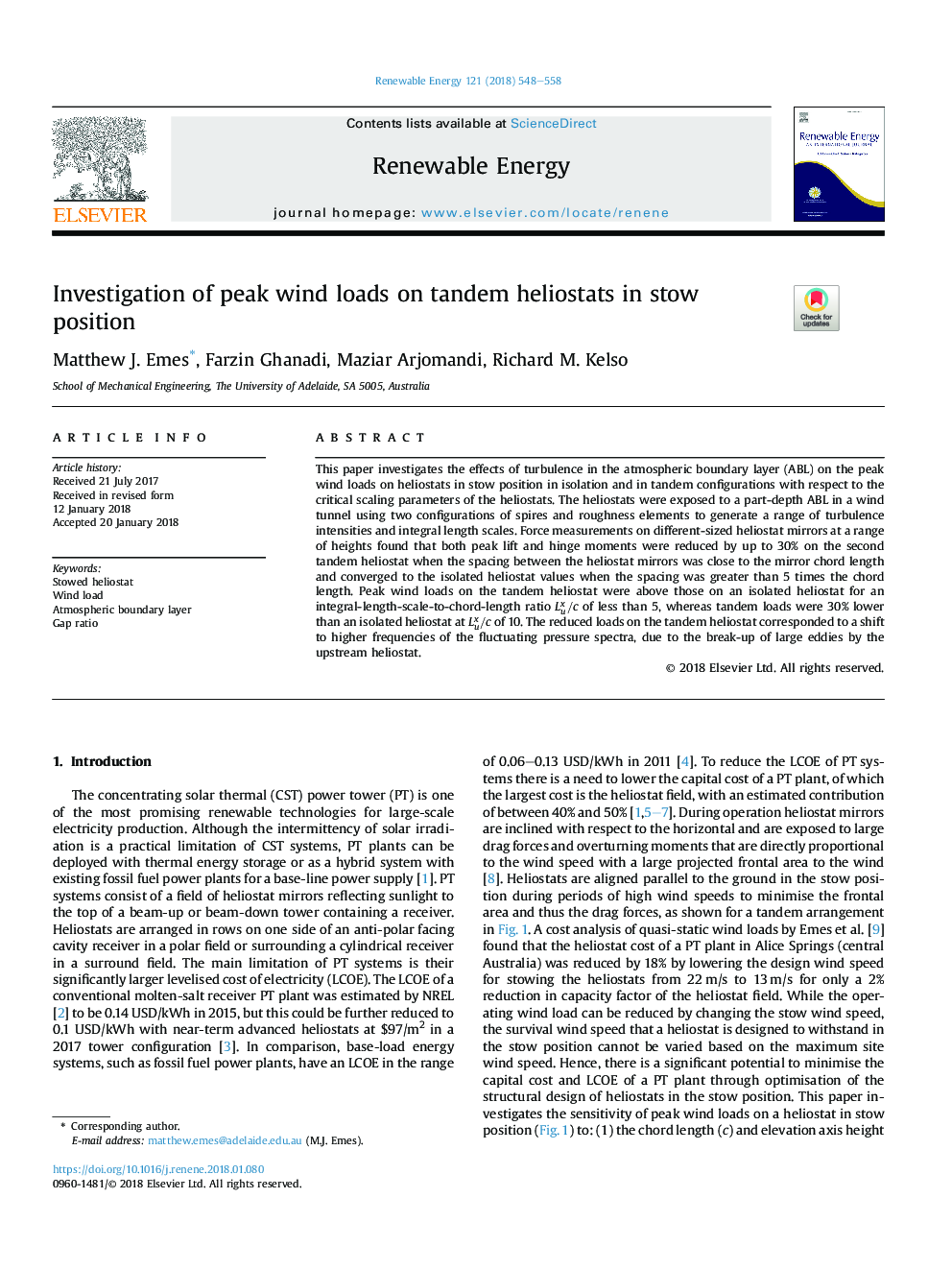| Article ID | Journal | Published Year | Pages | File Type |
|---|---|---|---|---|
| 6764808 | Renewable Energy | 2018 | 11 Pages |
Abstract
This paper investigates the effects of turbulence in the atmospheric boundary layer (ABL) on the peak wind loads on heliostats in stow position in isolation and in tandem configurations with respect to the critical scaling parameters of the heliostats. The heliostats were exposed to a part-depth ABL in a wind tunnel using two configurations of spires and roughness elements to generate a range of turbulence intensities and integral length scales. Force measurements on different-sized heliostat mirrors at a range of heights found that both peak lift and hinge moments were reduced by up to 30% on the second tandem heliostat when the spacing between the heliostat mirrors was close to the mirror chord length and converged to the isolated heliostat values when the spacing was greater than 5 times the chord length. Peak wind loads on the tandem heliostat were above those on an isolated heliostat for an integral-length-scale-to-chord-length ratio Lux/c of less than 5, whereas tandem loads were 30% lower than an isolated heliostat at Lux/c of 10. The reduced loads on the tandem heliostat corresponded to a shift to higher frequencies of the fluctuating pressure spectra, due to the break-up of large eddies by the upstream heliostat.
Related Topics
Physical Sciences and Engineering
Energy
Renewable Energy, Sustainability and the Environment
Authors
Matthew J. Emes, Farzin Ghanadi, Maziar Arjomandi, Richard M. Kelso,
